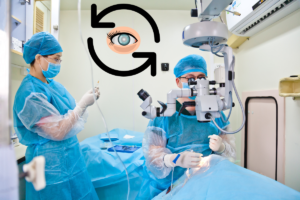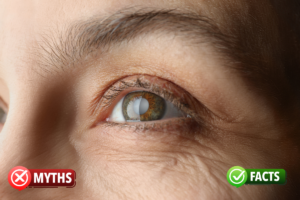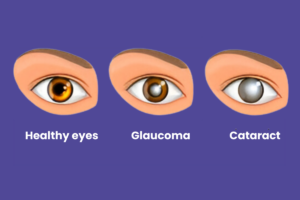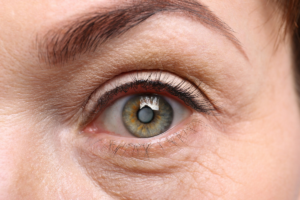10 common myths about cataracts & cataract surgery
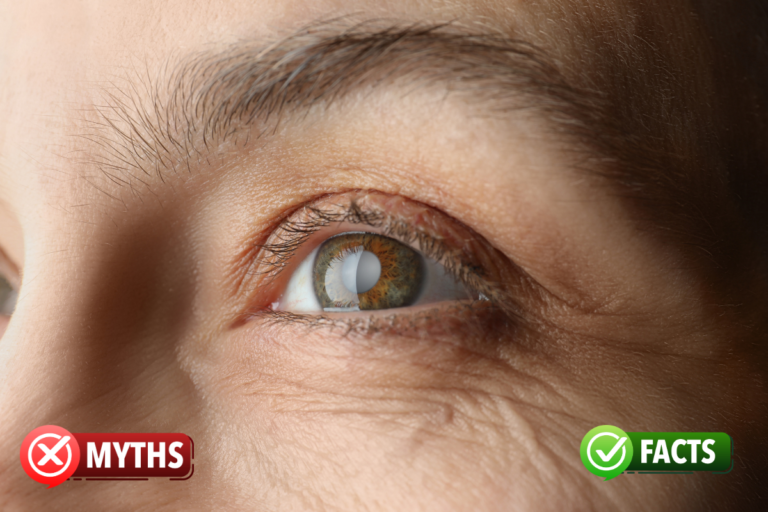
Cataracts are one of the most common causes of vision impairment worldwide. While cataract surgery is one of the most frequently performed and successful surgeries, there are still many myths surrounding the condition and the procedure. These misconceptions can lead to unnecessary anxiety, delays in treatment, and a lack of understanding. This blog aims to debunk some of the most common myths about cataracts and cataract surgery and provide you with the facts to make informed decisions.
- Cataracts only affect older people.
- Cataract surgery is painful.
- Cataract surgery requires a long recovery time.
- Cataract surgery will fix all vision problems.
- Cataracts can be treated with glasses or contact lenses.
- Cataracts are a sign of blindness.
- Cataract surgery is dangerous.
- Cataracts can only be treated with traditional surgery.
- After cataract surgery, you’ll never need glasses again.
- Cataracts always develop quickly.
1. Cataracts only affect older people
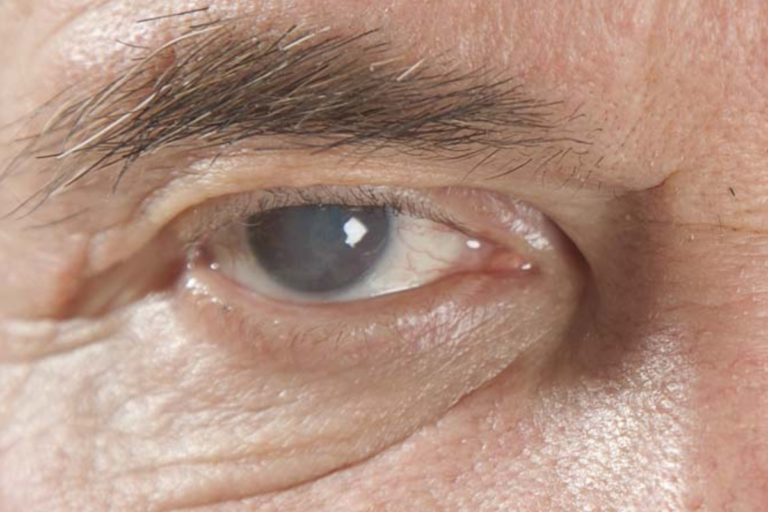
The myth: Cataracts are often associated with aging, with the common belief that only older individuals experience them.
The truth: While it’s true that the likelihood of developing cataracts increases with age, cataracts can also develop in younger people. Congenital cataracts can occur in newborns due to genetic factors or infections during pregnancy. Additionally, other factors, such as eye trauma, certain medications (like corticosteroids), diabetes, or prolonged UV exposure, can cause cataracts at any age.
The bottom line: Cataracts can affect people of all ages, not just older adults. Regular eye exams are essential for detecting cataracts early, regardless of age.
The myth: Many people believe that cataract surgery is painful and requires significant recovery time.
The truth: Cataract surgery is typically not painful. The procedure is performed under local anesthesia, which numbs the eye. You may feel pressure or a mild sensation during the surgery, but no sharp pain should occur. Most patients report little to no discomfort during the procedure. Afterward, you might experience mild irritation, dryness, or a gritty feeling in the eye, but these symptoms usually subside within a few days.
The bottom line: Cataract surgery is minimally painful. The procedure is done under anesthesia, and most patients experience only mild discomfort after the surgery.
3. Cataract surgery requires a long recovery time
The myth: Another misconception is that recovering from cataract surgery takes weeks or months, and patients need to take extended time off work or rest in bed.
The truth: Recovery from cataract surgery is usually quick. Most patients can resume normal activities within 24 to 48 hours, with some restrictions, such as avoiding strenuous exercise, heavy lifting, or rubbing the eye. The vision improves dramatically after the procedure, with most patients seeing better within a day. Full healing may take a few weeks, but most people can return to their routine activities very soon after surgery.
The bottom line: Cataract surgery has a quick recovery time, and most people can go back to their normal routine within a few days.
4. Cataract surgery will fix all vision problems
The myth: Some believe that cataract surgery will cure all vision problems, including refractive errors like nearsightedness or astigmatism.
The truth: Cataract surgery addresses only the clouded lens that causes impaired vision due to cataracts. It doesn’t correct refractive errors like nearsightedness, farsightedness, or astigmatism unless specialized intraocular lenses (IOLs) are used. In some cases, additional vision correction, such as glasses or contact lenses, may still be necessary after cataract surgery.
The bottom line: Cataract surgery restores vision by removing the cloudy lens, but it doesn’t correct other refractive vision issues. In some cases, glasses may still be needed after surgery.
5. Cataracts can be treated with glasses or contact lenses

The myth: Some believe that cataracts can be treated with corrective lenses instead of surgery.
The truth: Glasses or contact lenses may help manage the vision impairment caused by cataracts in the early stages, but they won’t treat the underlying problem. As cataracts progress, they cause the lens in the eye to become cloudier, and no external corrective lenses will restore clear vision. Surgery is the only effective treatment for cataracts.
The bottom line: While glasses or contacts may improve vision in the early stages of cataracts, surgery is the only way to effectively treat the condition.
6. Cataracts are a sign of blindness

The myth: There is a misconception that cataracts always lead to complete blindness if left untreated.
The truth: While cataracts can significantly impair vision, they do not cause blindness. Cataracts tend to develop slowly over time, and many people can continue with reduced vision for years before seeking treatment. With cataract surgery, which is highly effective, most patients experience restored vision, preventing severe vision loss or blindness.
The bottom line: Cataracts can cause blurry or cloudy vision, but they do not necessarily lead to blindness. Cataract surgery can restore vision and prevent significant impairment.
7. Cataract surgery is dangerous
The myth: Some people fear that cataract surgery is risky and carries a high risk of complications.
The truth: Cataract surgery is one of the safest and most commonly performed procedures globally. With advancements in surgical techniques and technology, the risk of complications is extremely low. The surgery has a very high success rate, and complications, if they occur, are rare and treatable. Most patients experience a significant improvement in vision after surgery, and any potential risks can be minimized with proper pre-operative care and a skilled surgeon.
The bottom line: Cataract surgery is a low-risk, highly effective procedure with a very high success rate. Serious complications are rare.
8. Cataracts can only be treated with traditional surgery
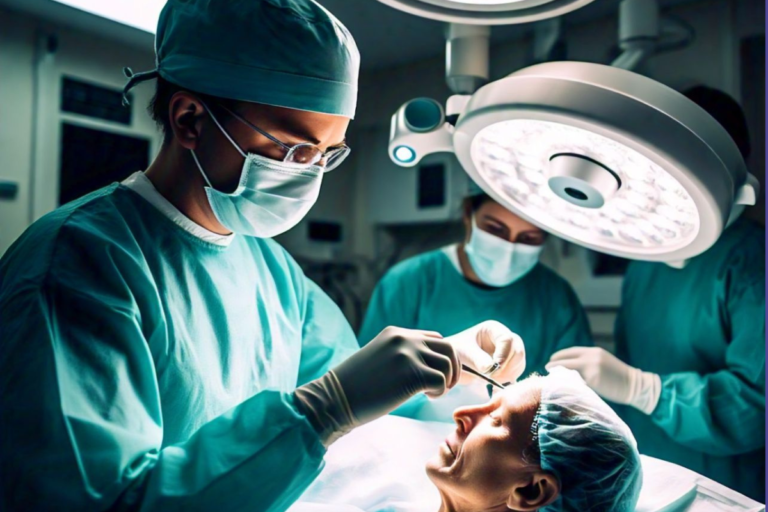
The myth: Some individuals believe that cataract surgery always involves traditional, invasive methods.
The truth: Cataract surgery has evolved significantly. In the past, traditional surgery was the only option, but now there are advanced techniques like phacoemulsification, which uses ultrasound to break up the cataract and remove it with smaller incisions. There is also laser-assisted cataract surgery, which allows for greater precision and improved outcomes. These newer techniques result in quicker recovery times, less discomfort, and more accurate results.
The bottom line: Cataract surgery today is minimally invasive and can be performed with advanced techniques like phacoemulsification and laser-assisted surgery.
9. After cataract surgery, you'll never need glasses again
The myth: Many people believe that after cataract surgery, they will never need to wear glasses again.
The truth: While cataract surgery can restore clear vision, it doesn’t always eliminate the need for glasses. The type of intraocular lens (IOL) implanted during surgery can affect your need for glasses. Some patients who opt for multifocal IOLs may be able to see both near and far without glasses. However, some individuals may still require glasses for reading or fine detail work, depending on their vision needs and the IOL used.
The bottom line: Cataract surgery restores vision, but you may still need glasses for certain tasks, like reading or close-up work, depending on the type of IOL implanted.
10. Cataracts always develop quickly
The myth: People often assume that cataracts develop quickly, causing a rapid decline in vision.
The truth: Cataracts generally develop slowly over many years. In the early stages, cataracts may cause only mild changes in vision that can be managed with glasses. As cataracts mature, they can cause more significant vision impairment, but the process is usually gradual. Some people may not notice any changes in vision for a long time, while others may experience more rapid progression.
The bottom line: Cataracts tend to develop slowly, and the decline in vision is usually gradual. Early detection and monitoring can help manage the condition.
Conclusion
Understanding the truth behind these common myths about cataracts and cataract surgery can help you make more informed decisions regarding your eye health. Cataract surgery is a safe, effective, and life-changing procedure that can restore your vision and improve your quality of life. If you have any concerns or need personalized advice, don’t hesitate to consult an ophthalmologist at Krisha Eye Hospital. We’re here to help you see clearly and live confidently.
Author bio
Dr. Dhwani Maheshwari, an esteemed ophthalmologist with over 10 years of experience, leads Krisha Eye hospital in Ahmedabad with a commitment to advanced, patient-centered eye care. Specializing in cataract and refractive surgery, Dr. Maheshwari has performed more than a thousand successful surgeries. Her expertise lies in phacoemulsification, a technique recognized for its precision in cataract treatment.
Dr. Maheshwari’s educational journey includes an MBBS from Smt. NHL MMC, a DOMS from M & J Institute of Ophthalmology, and a DNB in Ophthalmology from Mahatme Eye Bank Eye Hospital, Nagpur. She also completed a fellowship in phacoemulsification at Porecha Blindness Trust Hospital, further enhancing her surgical skills. In addition to her work at Krisha Eye Hospital, Dr. Maheshwari serves as a consultant ophthalmologist at Northstar Diagnostic Centre.
Under her leadership, Krisha Eye Hospital aims to bring all superspecialties under one roof, offering comprehensive eye care solutions for all vision needs.











